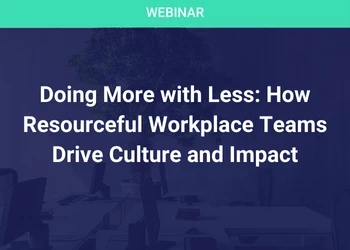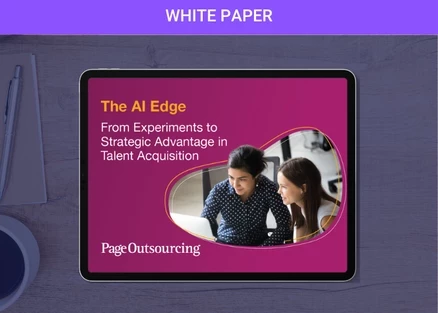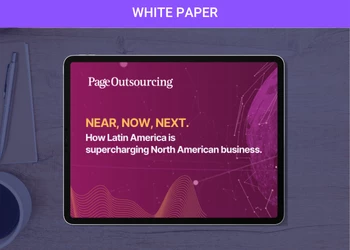
Outsourcing some, or all, of your business processes is a big step but what happens when the contract is due to expire? Maybe your provider has already approached you with a proposal for renewal, but is that the best option? If you’ve outsourced, this will eventually become your reality – and a great opportunity.
Contract expiration can be a catalyst for business services leaders to galvanize their stakeholders around desired changes to their outsourcing operating model and relationship. SSON’s State of Shared Services and Outsourcing 2024 Market Report indicates an uptick in propensity to outsource more for those companies that already outsource. And the emphasis is changing with the latest trend toward increased customer experience alongside cost efficiency and access to talent.
So where to begin? In our experience it is best to start the re-evaluation process 9-12 months prior to the expiration of the current relationship. Successful contract renewal or termination and moving to a new relationship is all about asking the right questions. So, let’s move forward by outlining a few questions and highlighting some of the considerations.
What are your objectives for outsourcing, and have they changed over the years?
There are numerous reasons organizations move to outside service providers and the clearer the customer is about what is important to them will drive a better renegotiation or re-compete process. Typical objectives include:
- Improve cost and efficiency particularly with the advent of new technology. Many existing contracts have inadequate methods for allowing the customer to share in the economic benefits of unanticipated and new technologies (think Artificial Intelligence).
- Increase service levels and customer experience. Expectations of your internal customers increase over time – good is never quite good enough and the selection of a provider should reflect this fact. Good contracts ask providers to commit to continuous improvement goals where costs are expected to decline and performance is expected to climb. Be particularly aware of the “watermelon effect” in your existing relationship where the dashboard on standard service levels is showing green while the broader indicator of customer experience is flashing red.
- Accelerate transformation. Many companies struggle in obtaining and retaining the skills necessary for digital transformation. Operational effectiveness alone of existing procedures is no longer sufficient. Many outsourcing providers (or even software vendors themselves) can provide you with pure technology tools and talent, but look for those who can integrate technology with deep process knowledge along with other transformation expertise.
- Increase value. Transaction processing efficiency and operational effectiveness is great, but impacting business outcomes is the holy grail. The days of passively “doing what they tell us” are over and your provider should be required to provide insight and innovation that helps you, the customer, meet corporate goals. Ask providers for use cases, client contacts and demonstrated success stories that have changed a clients’ business outcomes.
What are the relationship goals?
Without sounding like a radio psychologist, what do you want from a provider relationship? Some contracts operate from a place of strict compliance, structured conflict, and an adversarial tone. Others prefer (and focus on) a partnership model where benefits from improvement are shared between parties and the focus is on providing the best possible outcome for your business customers. The following chart depicts the continuum of relationship models that you may adopt:

Whatever relationship model you choose, clarity is key and open communication is tantamount for success. Well designed governance structures will go a long way here as will the right performance expectations and measurements. We have seen a variety of outsourcing deals go sour over the years and many, many times it is a relationship issue at the core. Is your deal fair, safe and sustainable?
Do you have your scope of service right?
Things change over time, and they certainly do over the lifetime of a multiyear contract. Is your current scope of services the best mix to meet your goals? If you are transaction focused, are there higher value activities that would benefit from going outside and being tied to the base transaction work? Are there cross functional activities that could be grouped into complete business outcomes with lower cost and greater insight? Balancing and grouping like activities into a well-constructed portfolio will yield the optimal result.
Does the organization have specific business problems you are looking to solve?
Honest introspection is hard, really hard, but the value of identifying current operational weaknesses both for existing and potential outsourced processes can offer great rewards when looking for the right outside partner and relationship. Soliciting input from your consumers of service is a valuable exercise even when the results may bruise egos. Say your technology environment is less cutting edge than you would like. Providers, by virtue of scale, can often afford the talent, software and tools to bring a customers’ environment into the 21st century. Their portfolio of clients with similar operations can allow them to spread the investment across their portfolio and enable them to attract hard to acquire (and retain) talent. They can often also develop deeper functional specialization and process expertise than a single industry entity. Depth of process expertise and technical ability are critical considerations when engaging with your business partner.
How does the organization feel about the current contract and the provider?
This may seem silly, but do you really know how your internal customers perceive the existing relationship? We assume it’s been a multiyear deal so the personnel shock has hopefully worn off but what are the real attributes your customers are looking for in a provider deal? Cost improvement always comes to mind but does ease of dealing with the provider count? What about a provider’s ability to support innovation and transformation? Many internal customers just want more simplicity, timeliness, accuracy, and quality of service. Others hope that the provider will “keep us cutting edge” by migrating best practices across industries and clients and therefore maintaining or increasing competitiveness. Use Net Promoter Score (NPS), customer satisfaction surveys, customer focused workshops, or other techniques before proceeding – know before you go!
Do you just want to renegotiate the deal with your current provider or do you take a broader look?
The answer is – that depends. If the organization is satisfied with the current scope and levels of service and believes the cost profile is efficient and appropriate then a straight up renewal might be the right answer. This, however, isn’t as simple as it sounds. Provider performance levels need to be benchmarked not only against the contract service levels, but external performance standards in the industry and functions performed. The key here is do the FACTS around supplier performance match the perception of performance? You already should have the data for this retrospective analysis from the current contract – look long and hard at the data and develop trend analysis models to reduce the complexity of the many performance indicators into a simpler composite performance profile.
Renewal alone may not be the right answer. Even if you stay with your existing provider you will want to see if operational arrangements and contract terms and conditions match changes business requirements and market conditions. For example, if you are expanding scope into areas that impact business outcomes like revenue or working capital this may require changes in terms for damages and losses. Adding more scope may trigger volume discounts. A more comprehensive renegotiation with your existing provider rather than a more modest renewal may be in order.
In particular if your objectives, scope and nature of services are significantly changing, you may want to consider a competitive RFP process as your current provider and contract may not have the flexibility to adapt to your new requirements This is likely much like the effort you went through when selecting your current provider. Outline the work to be done including any new aspirations for the work, report on the volumes of work, share standard operating procedures and highlight performance expectations. Pick some leading providers (including your current supplier if they have base capabilities) and run a well-designed “bake off” where all participants get the same data, the same access and the same level of consideration. Using an RFP just to put pricing pressure on your current provider is not only disingenuous but, in many cases, causes the existing supplier to find ways to “cut corners” in order to win the contract renewal and, almost always, they find out this was the company’s strategy. This can damage the future relationship should you choose to renew. If you’re going out to RFP, make it fair, objective and transparent. We believe this approach provides the best outcome for the vast majority of clients we have served.
This list is hardly complete. You will have other questions you will want to ask before renewing, renegotiating and re-competing services to outsourcers. A well-considered approach to this effort is the key for success.
From our years of experience, we have developed a few basic tenants:
- Plan ahead so you can take the time this needs
- Think broadly about your future needs
- Act on facts, not feelings or opinions
- Establish clear plans for the process
- Know your internal customers’ needs, and check in throughout the process to confirm alignment
- Always act with fairness and equity in mind
- Strive to find a solution that benefits both you and the provider
- Get good advice from outside third parties that have “been there, done that”























